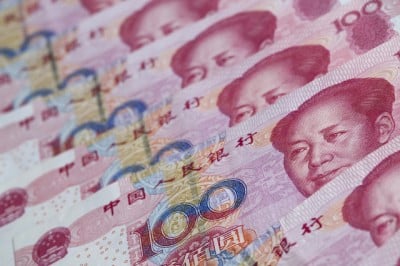A Double Dip By The ISM Manufacturing Index Into Contraction Territory Preceded The Previous Two Big Bear Markets For Stocks ~ And things will continue to unravel as we move into 2016 and beyond ... A key gauge of manufacturing activity has double-dipped into
recession territory, but stock market investors don’t seem to care.
History suggests, however, that maybe they should. The Institute of Supply Management’s manufacturing index for November
surprisingly fell to the lowest level since June 2009, the last month
the U.S. economy was in recession. More importantly, the ISM index fell
below the 50% level, to signal contraction, for the first time since it
dipped below that level for one month in November 2012. Meanwhile, the S&P 500 Index SPX, +1.07% climbed 1.1%, with more than 80% of the components gaining ground. The following chart shows the last two big bear markets, were
foreshadowed by a return of the ISM index into contraction territory, in
August 2000 and December 2007.
http://investmentwatchblog.com/investor-alert-11-signs-that-an-imminent-stock-bear-market-apocalypse-has-become-even-more-likely/
 |
Illustration: Peter C. Espina/GT
By Song Guoyou Source:Global Times
Investment by Chinese firms supported by domestic finance sector
As more and more Chinese enterprises expand into Africa,
there has been increasing interest in China's economic activities in the
continent. As well as positive feedback, there have also been some
negative comments, with China having been accused of neo-colonialism, of
grabbing resources and dumping low-quality products. Such
criticism is the opposite of how most African people see it. Massive
investment in Africa has not only led to economic benefits for Chinese
enterprises; it has also provided growth momentum for African countries.
It is a win-win situation for the development of China and Africa, and
for the Sino-African relationship. http://www.globaltimes.cn/content/954970.shtml
|
The elevation the Chinese renminbi (also known as the yuan) to
the basket of global currencies making up the International Monetary
Fund’s special drawing rights (SDRs), in effect making it an
international reserve currency, is unlikely to have any major immediate
effects. But it does underscore the vast transformation in the
foundations of the world economy over the past three decades resulting
from the long-term economic decline of the US. As the Stratfor web site noted in its comment on the decision, it is
the first time that the basket of reserve currencies, which had
previously comprised the dollar, the British pound, the Japanese yen and
the euro, will include the currency of a country not allied with the
US. The post-World War II monetary order, of which the IMF was a part,
was grounded on the overwhelming economic dominance of the US. In 1945,
Stratfor pointed out, US gross domestic product was estimated to be as
high at 50 percent of the world total. This year it will be 22 percent. While it supported the decision to include the renminbi in the SDR
basket, the US did so very much with gritted teeth. The principal reason
for its acquiescence was fear that its continued resistance—it played
the leading role in having China’s 2010 push to be included in the SDR
basket turned down—would provoke opposition from other powers. There is
already criticism of the US from within the IMF because Congress has
refused to ratify a 2010 decision to give China increased voting rights.
At present, it has the same vote within the organisation’s bodies as
Belgium.
http://www.globalresearch.ca/the-imf-sdr-rights-and-the-global-currency-markets-impacts-of-the-elevation-of-the-chinese-yuan-renminbi/5493966



No comments:
Post a Comment